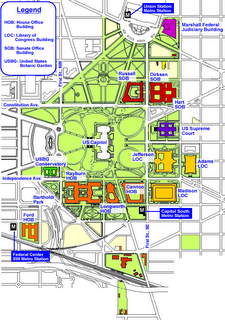
1792 október 13-án George Washington ünnepélyesen lerakja a Fehér Ház alapkövét a Templomos Lovagrend ellen megindított összehangolt támadás és Nagymesterének, DeMolay az inkvizíció bírósága elé vezetésének (1307 október 13.) évfordulóján*.
Templomos Lovagrend ellen megindított összehangolt támadás és Nagymesterének, DeMolay az inkvizíció bírósága elé vezetésének (1307 október 13.) évfordulóján*.
freemasons franc macons Templomos Lovagrend ellen megindított összehangolt támadás és Nagymesterének, DeMolay az inkvizíció bírósága elé vezetésének (1307 október 13.) évfordulóján*.
Templomos Lovagrend ellen megindított összehangolt támadás és Nagymesterének, DeMolay az inkvizíció bírósága elé vezetésének (1307 október 13.) évfordulóján*.
A Capitolium alapkövét 1793. szeptember 18-án fektették le.
Az ünnepséget a marylandi Szabadkőműves Nagypáholy szervezte és George Washington kérték fel az ünnepség elnökének. Jelen voltak még a közeli és csatlakozott páholyok tagjai valamint Washington saját Páholya is Alexandriából. A szabadkőművesek teljes díszben vonultak fel.
Washington elmondta díszbeszédét amit ágyú sortűz, majd a szabadkőművesek rituális „kiáltása” követett .
A ceremóniához használt kalapácsot, az ezüst vakolókanalat, a derékszöget és a vízszintmérőt a mai napig a District of Columbia 5-ös számú, Potomac páholya őrzi, míg Washington kötényét és vállszalagját saját páholya, a Virginiai Alexandria 22-es.
Az ünnepséget a marylandi Szabadkőműves Nagypáholy szervezte és George Washington kérték fel az ünnepség elnökének. Jelen voltak még a közeli és csatlakozott páholyok tagjai valamint Washington saját Páholya is Alexandriából. A szabadkőművesek teljes díszben vonultak fel.
Washington elmondta díszbeszédét amit ágyú sortűz, majd a szabadkőművesek rituális „kiáltása” követett .
A ceremóniához használt kalapácsot, az ezüst vakolókanalat, a derékszöget és a vízszintmérőt a mai napig a District of Columbia 5-ös számú, Potomac páholya őrzi, míg Washington kötényét és vállszalagját saját páholya, a Virginiai Alexandria 22-es.


Úgy a Capitolium mint a White House a nemzet fővárosának egy meghatározó geometriai fókuszpontját alkotja. A várostervezők elgondolását Washington és Jefferson úgy módosította, hogy a város felülnézeti oktogon képe magába foglalja a Masonic Templomosok keresztjének ábráját.
Mai térképet szemlélve mindez már felismerhetetlen.
Mai térképet szemlélve mindez már felismerhetetlen.
* Jacques De Molay elfogatása után 7 évet töltött börtönben, majd máglyán végezte életét.
http://www.aoc.gov/
http://memory.loc.gov/ammem/today/oct13.html
http://www.demolay.org/history/people/demolay/index.shtml
http://www.templarhistory.com/demolay.html
3 megjegyzés:
De Molay-t nem keresztre feszítették, hanem megégették, ráadásul nem október 13-án, hanem március 13-án, mások szerint 18-án. Október 13. a rend elleni összehangolt támadás megkezdésének napja.
Köszönöm, ellenörzöm, javítom és örülök hogy olvasol.
üdv
a netről, a postban megjelent oldal:
The Story of Jacques DeMolay
The namesake of the Order of DeMolay was born in Vitrey, Department of Haute Saone, France in the year 1244. At the age of 21, DeMolay joined the Order of Knights Templar.
The Knights Templar was an organization sanctioned by the Roman Catholic Church in 1128 to guard the road between Jerusalem and Acre, an important port city on the Mediterranean Sea. The Order of Knights Templar participated in the Crusades and earned a name for valor and heroism.
With many nobles and princes sending their sons to join the Knights Templar, the Order also became very wealthy and popular throughout Europe.
In 1298, Jacques DeMolay was named Grand Master of the Knights Templar, a position of power and prestige. As Grand Master however, Jacques DeMolay was also in a difficult position. The Crusades were not achieving their goals. The non-Christian Saracens defeated the Crusaders in battle and captured many vital cities and posts. The Knights Templar and the Hospitalers (another Order of Knights) were the only groups remaining to confront the Saracens.
The Knights Templar decided to reorganize and regain their strength. They traveled to the island of Cyprus, waiting for the general public to rise up in support of another Crusade.
Instead of public support, however, the Knights attracted the attention of powerful lords, who were interested in obtaining their wealth and power. In 1305, Philip the Fair, King of France, set about to obtain control of the Knights Templars. They had been accountable only to the Church. To prevent a rise in the power of the Church, and to increase his own wealth, Philip set out to take over the Knights.
The year 1307 saw the beginning of the persecution of the Knights. Jacques DeMolay, along with hundreds of others, were seized and thrown into dungeons. For seven years, DeMolay and the Knights suffered torture and inhuman conditions. While the Knights did not end, Philip managed to force Pope Clement to condemn the Templars. Their wealth and property were confiscated and given to Philip's supporters.
During years of torture, Jacques DeMolay continued to be loyal to his friends and Knights. He refused to disclose the location of the funds of the Order and he refused to betray his comrades. On March 18, 1314, DeMolay was tried by a special court. As evidence, the court depended on a forged confession, allegedly signed by DeMolay.
Jacques DeMolay disavowed the forged confession. Under the laws of the time, the disavowal of a confession was punishable by death. Another Knight, Guy of Auvergne, likewise disavowed his confession and stood with Jacques DeMolay.
King Philip ordered them both to be burned at the stake that day, and thus the story of Jacques DeMolay became a testimonial to loyalty and friendship.
Megjegyzés küldése